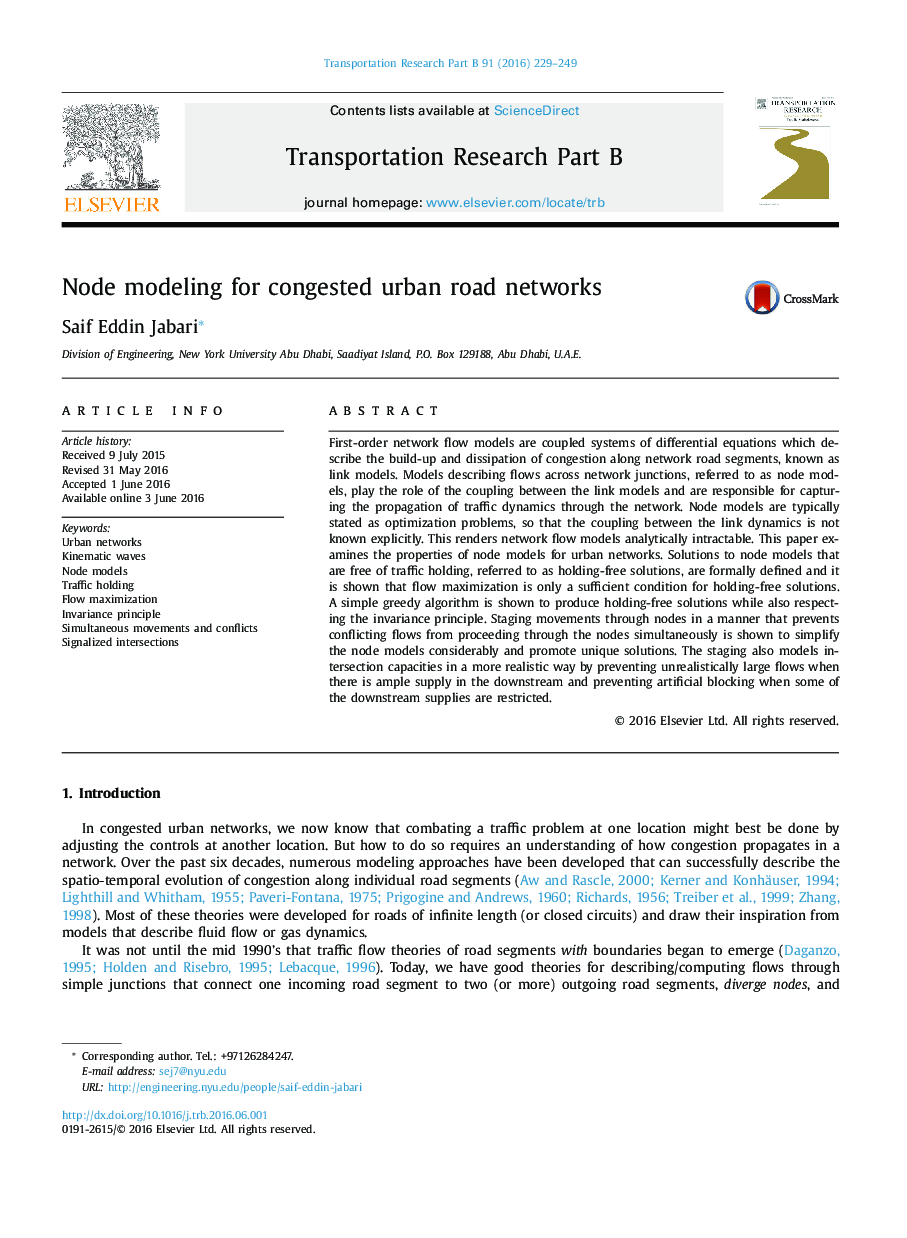| Article ID | Journal | Published Year | Pages | File Type |
|---|---|---|---|---|
| 1131535 | Transportation Research Part B: Methodological | 2016 | 21 Pages |
•A formulation of holding-free flows at network nodes.•Fast holding-free solution algorithms that honor the invariance principle.•Comparisons between holding-free solutions and max-flow solutions.•Non-simultaneity of conflicting flows and an explicit solution formula.
First-order network flow models are coupled systems of differential equations which describe the build-up and dissipation of congestion along network road segments, known as link models. Models describing flows across network junctions, referred to as node models, play the role of the coupling between the link models and are responsible for capturing the propagation of traffic dynamics through the network. Node models are typically stated as optimization problems, so that the coupling between the link dynamics is not known explicitly. This renders network flow models analytically intractable. This paper examines the properties of node models for urban networks. Solutions to node models that are free of traffic holding, referred to as holding-free solutions, are formally defined and it is shown that flow maximization is only a sufficient condition for holding-free solutions. A simple greedy algorithm is shown to produce holding-free solutions while also respecting the invariance principle. Staging movements through nodes in a manner that prevents conflicting flows from proceeding through the nodes simultaneously is shown to simplify the node models considerably and promote unique solutions. The staging also models intersection capacities in a more realistic way by preventing unrealistically large flows when there is ample supply in the downstream and preventing artificial blocking when some of the downstream supplies are restricted.
